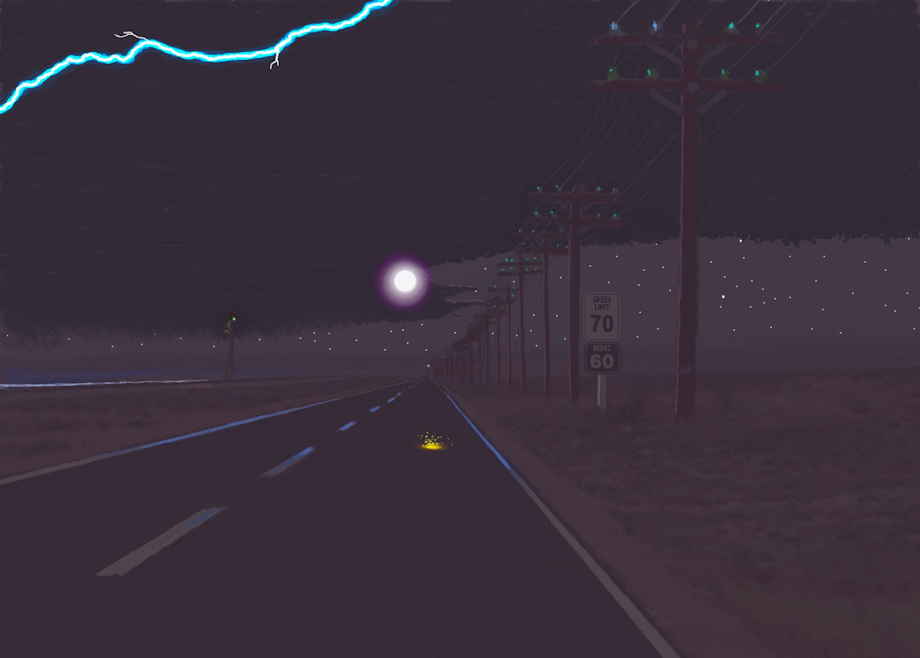
| " | Ball lightning is an unexplained and potentially dangerous atmospheric electrical phenomenon. The term refers to reports of luminescent, spherical objects that vary from pea-sized to several meters in diameter. Though usually associated with thunderstorms, the phenomenon lasts considerably longer than the split-second flash of a lightning bolt. Two reports[1][2] from the nineteenth century claim that the ball eventually explodes, leaving behind an odor of sulfur. |
| " | The most devastating example of this is the tragedy that struck during the Great Thunderstorm at Widecombe-in-the-Moor on October 21, 1638. At least four people were killed and around 60 injured when lightning struck the a church during service, and ball lightning burst through the window and fell among the parishioners. It was a stunning, unthinkable tragedy and, thanks to its instant notoriety, its effects were painstakingly documented. |
| " |
In December, 1726, a number[quantify] of British newspapers[which?] printed an extract of a letter from John Howell of the sloop Catherine and Mary: As we were coming thro’ the Gulf of Florida on the 29th of August, 1726, when a large ball of fire fell from the Element (name of a sea craft) and split our mast in Ten Thousand Pieces, if it were possible; split our Main Beam, also Three Planks of the Side, Under Water, and Three of the Deck; killed one man, another had his Hand carried of [sic], and had it not been for the violent rains, our Sails would have been of a Blast of Fire. |
| " | In 1809, another ship was visited by ball lightning, which once again left havoc in its wake. In this instance three separate burning orbs descended upon the ship. The mast was set on fire and two of the crew were killed. Once again, the smell of sulfur filled the air. |
| " | Willy Ley discussed a sighting in Paris on 5 July 1852 "for which sworn statements were filed with the French Academy of Science". During a thunderstorm, a tailor living next to Church of the Val-de-Grâce saw a ball the size of a human head come out of the fireplace. It flew around the room, reentered the fireplace, and exploded in and destroyed the top of the chimney |
| " | On 6 August 1944 a ball of lightning went through a closed window in Uppsala, Sweden, leaving a circular hole about 5 centimetres (2.0 in) in diameter. The incident was witnessed by residents in the area, and was recorded by a lightning-strike tracking-system[32] on the Division for Electricity and Lightning Research at Uppsala University. |
| " | In January 1984, ball lightning measuring about 4 inches in diameter entered a Russian passenger aircraft and, according to the Russian news release, "flew above the heads of the stunned passengers. In the tail section of the airliner, it divided into two glowing crescents which then joined together again and left the plane almost noiselessly." The ball lightning left two holes in the plane. |
| " | In the spring of 1984, my youngest brother was struck and killed by "a ball of lightning". This happened during the beginning of a thunderstorm in western lower Michigan. The "ball" made no course changes, just traveled in a straight line about 3 feet off the ground. It struck him square in the chest and blew his shirt off of him. The heat from the impact was so fierce that it burned his internal organs. This is not something to play around with if anyone has the misfortune to be near this phenomena. STAY AWAY! |
| " |
Ive witnessed a ball of lightning before, in 2006 my daughter was enjoying an icecream during a storm, she stood a few feet from the doorway licking her cone when suddenly a bluish ball came right thorough the doorway and burst right above her shoulder, singing her hair melting the ice cream to nothing, burnt the cone and left her shoulder paralyzed for 2 weeks. |